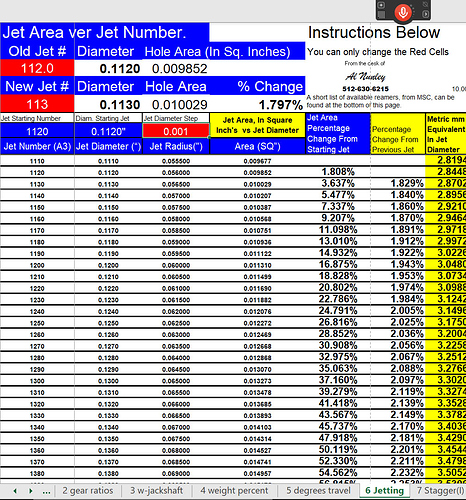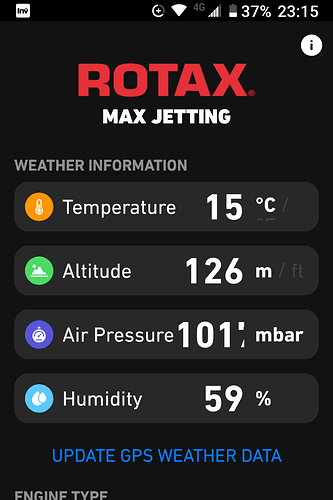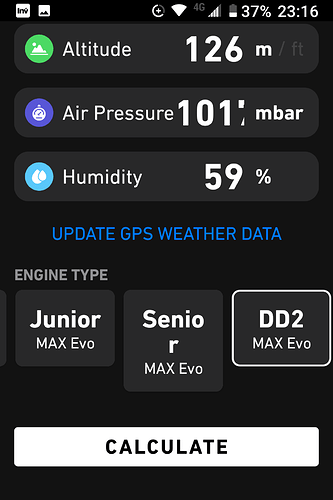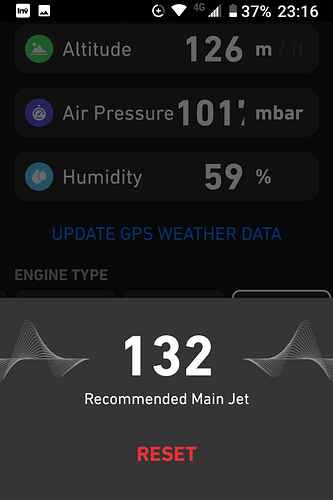Following on a discussion about the need or purpose of an EGT sensor with Rotax max…
It doesn’t seem to be widely used…
I started karting in 1966. Soon after I started in I KF there was an article in the Karter News about the advantages of using an EGT. It was written by the people at Bystrom Instruments. It put a bug in my ear that never went away.
In 1985 I built a water break dyno. In addition to the built-in tachometer and strain gauge, I attached an EGT, a CHT and another tachometer. I have been a firm believer in the benefits of the EGT ever sense. With an EGT the CHT is relegated to a minor function, almost superfluous.
There are a couple of things that need to be learned when using the EGT. First, the EGT is very very fast to register on the gauge. 2nd, when you get detonation the EGT will read lower.
This can cause some confusion in that you may start getting some detonation before you reach maximum EGT readings. A KT100, under normal circumstances, without detonation, will end up with an EGT reading of 1100 to 1200° at peak RPM. Less than that can because by 2 things, too rich or too lean. Unless you can hear the engine detonating (too lean) it’s hard to tell why it’s reading lower than maximum. My advice is always go richer first. If the EGT reading goes down, do the reverse and see if it goes up. Continue that process until you get the desired reading. Do the same thing on the low end with the low-speed needle. There’s some skill involved, but you most likely will soon develop that skill.
I was at a Sprint race in California when I first encountered someone with a EGT. He had just stuck his motor. I heard him explaining that it was only reading something like 800°. “I kept leaning it down an it kept going down!” he said. He obviously should have been enriching the mixture. Don’t make that mistake. Always enriching before leaning! The CHT can sometimes be an indicator of too rich or too lean. If the CHT is going up and the EGT is going down, too lean. If the CHT is going down and the EGT is going down, too rich. Just remember, the EGT is very very quick to register the exhaust gas temperature.
The Rotax FR125 behaves differently than typical aircooled two strokes in Karting and is generally pretty easy to setup for jetting.
They will start to backfire (sometimes called a “lean pop”) if you get too lean. It’s pretty hard to cause detonation unless you go out of your way to buy weird jet sizes.
Rotax even have charts for jetting based on baro pressure that will get you really close.
None of this is related to my personal ability to tune, it’s manufacturer information. If you’d like to discuss that we can (yet again) start a separate topic.
I think it’s great that you’re willing to share your experiences with KT, but that experience doesn’t apply here.
The Rotax FR is a lot different to the engines you’ve worked with and behaves as I describe.
It’s not a KT nor does it have the same sensitivity to jetting. The charts based on baro (Specific to Rotax) are pretty widely used and perfectly adequate for someone who’s looking to gain seat time or run at club level competitively.
James is correct, and the engineers at Rotax who compiled that chart do indeed know how to tune a 2-stroke. EGT is of almost no use with a Rotax; your jetting steps with a float bowl carb are too blunt. A Rotax will show almost identical egt’s with 3 different main jets, yet will have varying performance characteristics. That’s why you almost never see Rotax pipes with egt sensors, even at the highest levels of Rotax racing. You do see every tuner with a weather station, though.
James, why do I get the feeling that you think I don’t know what I’m talking About?
Barometric pressure, by itself, is only half the puzzle!
What makes you think the local racer has less of a desire to win? That’s what it sounds like!
Because it doesn’t apply to Rotax Max under any kind of normal racing condition and it’s clear you haven’t worked with one.
The Rotax Max is not at all like 100cc air cooled engines that you and I are accustomed to. First time I heard a lean pop I thought I blew it up. It was designed in a way to make it easier to tune and more difficult to blow up.
Your theory contradicts the experience of people that have raced this engine package from local to international level and contradict how it’s been designed to behave by Rotax themselves.
“Modern” kart engines are not as sensitive to tuning as the once were. That’s really the key point here. I say modern in quotes because the Max came onto the scene in 1998.
So really, the argument isn’t with me… It’s with Rotax and the people who’ve worked with them over the last two decades… Which by all means you’re welcome to have…
I’m not sure if I’m reading these posts correctly but the Rotax manual is WAY OFF when it comes to jetting. I use only density altitude as a jetting reference, but my memory is that the manual for my pre-Evo Rotax (the manual is at the track, not in front of me at home) would call for jetting in the range of 162 at a certain “standard” altitude but I could only get the engine to run smoothly with a 148.
One of my karting mates is literally a rocket scientist, and we both laugh at the Rotax recommendtions. I mean that; they are literally a joke at our track. Granted we are very hot in Tucson, AZ, in the summer but all that heat is taken account in the density altitude calculation. Currently with my Rotrax Evo I’m running a 115 but will soon change to a 118 as the temperatures are finally moderating.
The evo runs smaller jets alright.
Are you saying the evo settings aren’t working for you, or that the pre-evo settings aren’t working with an Evo.
The latter is expected behavior.
Our experience was that the pre-Evo settings were not even close. With the Evo, I cannot remember what the manual recommends (give me a memory break – remember, I am a VERY old guy); I only know that I’ve been running successfully with a 115 main jet this summer and will soon richen the mix by changing to a 118. It is appropriate to ask me to clarify that I understand that the Evo has a “smaller” carb and uses smaller main jetting. Accordingly, where I would use a 148 on a pre-Evo, I would, under the same track conditions, use a 115 on my current Evo.



